Steering feel may not top the list of priorities for every car buyer, but for driving enthusiasts, it’s one of the most defining elements of a car’s character. It’s the point of physical and emotional contact between the driver and the road—a sensory feedback loop that turns driving from a passive act into a participatory experience.
Whether you’re carving up a back road, navigating rush-hour traffic, or simply trying to park in a tight spot, the quality of a vehicle’s steering system shapes everything from your confidence to your enjoyment.
Yet in today’s automotive landscape, where electric power steering (EPS) has become the norm, it’s increasingly rare to find a rack that truly feels alive.
Gone are the days when most vehicles used hydraulic systems that delivered rich, organic feedback. While EPS has undeniable advantages—less parasitic drag, better efficiency, easier tuning for driver assistance features—it often comes at the expense of feel, immediacy, and communication.
The difference is stark: some systems seem to speak a nuanced language of grip, texture, and road camber, while others mumble through a cottony haze, leaving the driver isolated and unsure. That disparity can mean the difference between a car that feels like an extension of your body and one that feels more like a reluctant companion.
This article explores ten vehicles that exemplify both ends of the steering feel spectrum. On one side are five cars that get it right—machines with steering racks so precise, responsive, and talkative that they elevate the entire driving experience.
These are the cars where every turn of the wheel inspires trust and excitement, where feedback flows naturally, and the vehicle dances to your rhythm.
Their steering systems don’t just guide the wheels—they forge a connection between human and machine. Whether they use cutting-edge electric systems tuned to perfection or old-school hydraulic setups, these cars show that great steering is still possible in the modern era.
On the other side, however, are five vehicles that fall short. Despite competent chassis or impressive performance specs on paper, these cars suffer from steering racks plagued by dead zones, vague response, and an utter lack of feedback.
Their flaws might not be immediately dangerous, but they gradually erode driver confidence and rob the experience of any sense of fun or involvement.
In some cases, the numbness seems deliberate—engineered for comfort or mass appeal. In others, it feels like a missed opportunity, where better tuning could have turned an adequate vehicle into a great one.
The goal here isn’t to shame or glorify but to examine how steering feels shapes our interaction with a car. It’s about highlighting the systems that manage to get under your skin in the best way possible—and calling out the ones that simply get in the way.
As vehicle dynamics become increasingly software-defined and driver involvement is dialed back in favor of automation, the steering rack remains a vital area where soul, control, and confidence intersect.
Let’s take a deep dive into the cars that still make steering feel like an art—and those that sadly lost the brush.
Also Read: 10 Cars That Place USB Ports in the Worst Spots
Steering Racks That Feel Like Performance Cars
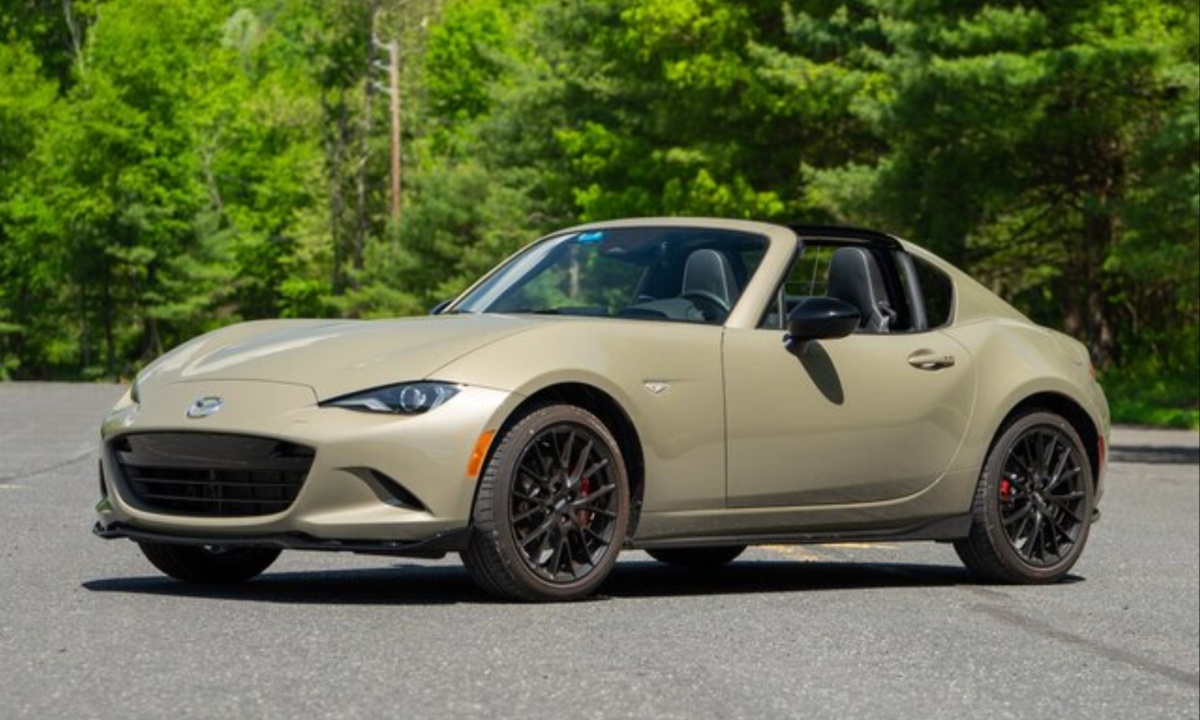
1. Mazda MX-5 Miata (ND)
The fourth-generation Mazda MX-5 Miata (ND) is an outlier in today’s automotive landscape, and its steering feel is one of the main reasons it has become a cult favorite among driving purists.
In a world where electric power steering systems often dull the connection between driver and machine, the Miata manages to preserve a delicate, analog-like sense of tactility. Mazda engineers have pulled off a rare feat: an EPS system that feels genuinely alive.
The ND Miata uses a dual-pinion, rack-mounted electric assist that’s been tuned to deliver immediate response without filtering out too much of the road. As a result, drivers are treated to a wheel that delivers subtle textures from the pavement, weight that builds predictably in corners, and accuracy that rewards delicate inputs.
What elevates the Miata’s steering from good to great is how seamlessly it integrates with the rest of the car’s dynamics. This is not just a quick rack dropped into a lightweight chassis—it’s a holistic approach to driver involvement.
The low center of gravity, near-perfect weight distribution, and rear-wheel-drive layout all feed into the sensation of precision and agility.
The front end responds to every minor flick of the wrist, offering real-time feedback that helps the driver gauge grip, weight transfer, and even the nuances of surface camber. On a twisty back road, the steering lets you dance the car between apexes with a kind of rhythmic precision that’s difficult to find in any other vehicle under $35,000.
Critically, this isn’t a system that punishes you for not being on your game. Unlike some hyper-focused performance setups that feel nervous or twitchy, the Miata strikes a rare balance between sharpness and approachability.
There’s just enough compliance to make the car forgiving during everyday driving, but enough immediacy to let you feel like a hero on a Sunday drive through the canyons.
Whether you’re commuting through the city, carving up a mountain road, or lapping a track day, the ND Miata’s steering invites you to be part of the experience, not just a passenger. It’s one of the best examples of how the right steering rack can transform a modest powertrain into something truly magical.

2. Porsche Cayman (718 Series)
The Porsche 718 Cayman is a masterpiece of mid-engine precision, and its steering system is arguably the cornerstone of its reputation.
While purists initially lamented the switch from hydraulic to electric power steering in the previous generation, Porsche’s engineers have arguably perfected EPS to the point that most drivers won’t miss the hydraulic system at all.
The Cayman’s steering rack feels so organic and responsive that it often fools the brain into thinking it’s connected by mechanical cables rather than software and servos.
The rack is mounted low, tightly integrated with the chassis, and designed to eliminate parasitic motion or delay. As a result, every input you make through the steering wheel is mirrored with uncanny immediacy at the contact patches of the front tires.
Part of what makes the Cayman’s steering so special is how harmoniously it interacts with the car’s weight distribution and chassis balance. The mid-engine layout means that the steering doesn’t need to fight a heavy nose or compensate for excessive front-end inertia.
This allows the rack to remain light and reactive without sacrificing feedback. What you get is a steering system that builds weight naturally through corners, communicates lateral grip with clarity, and lets you sense subtle tire slip before it becomes a problem.
The ratio is quick, but not overly darty—it feels perfectly matched to the chassis, allowing you to place the car with surgical accuracy whether you’re entering a hairpin or threading through high-speed sweepers.
Equally impressive is how the steering transforms based on speed and driver input. At low speeds, the system is composed and cooperative, never demanding extra effort or feeling artificially heavy. But as you build speed or increase your aggressiveness, the rack seems to wake up, amplifying its communication without becoming jittery.
This progressive dynamic builds trust—something that’s increasingly rare in modern sports cars. It’s no wonder automotive journalists routinely describe the 718 as one of the best-handling cars on sale.
The steering rack isn’t just a conduit for control; it’s a tuned instrument, delivering feedback and response with a finesse that most manufacturers can only hope to achieve.
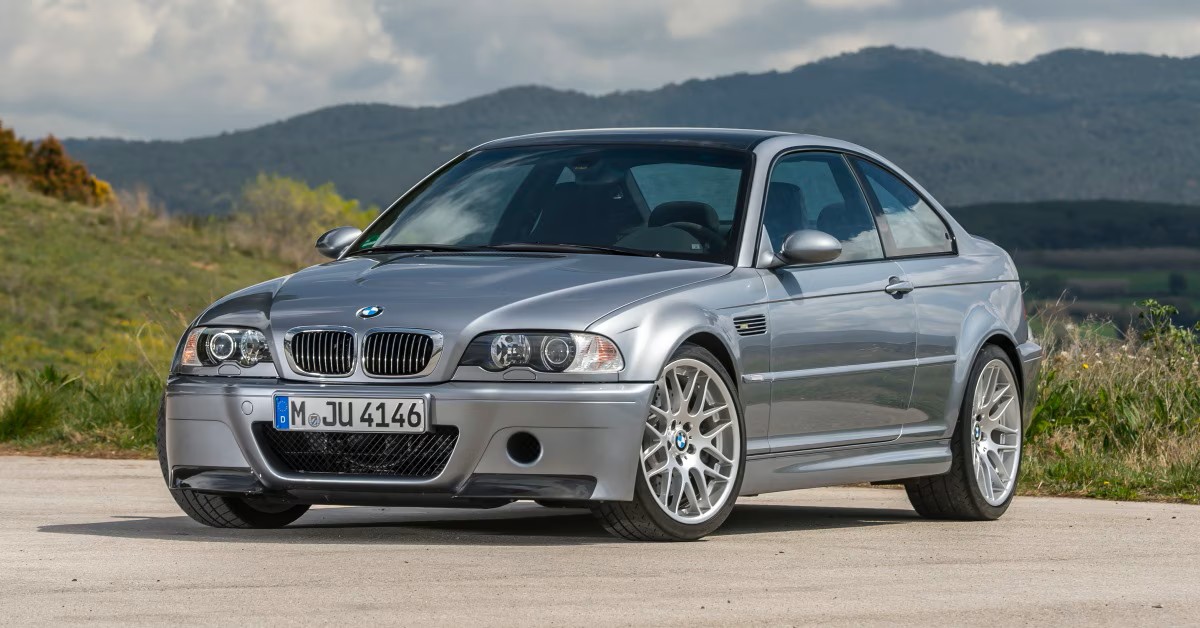
3. BMW E46 M3
Few cars have achieved the cult status of the BMW E46 M3, and its steering system is a major reason why. Introduced in the early 2000s, the E46 M3 features a hydraulic rack that’s often considered one of the finest ever fitted to a production car.
At a time when BMW still prioritized driver involvement over insulation, the M3’s steering offered directness, linearity, and feedback that felt alive in your hands. It wasn’t artificially heavy, nor was it numb.
Instead, it delivered exactly what you needed to know—when you needed to know it. This hydraulic rack gave the driver a deep connection to the car’s behavior at the limits, especially when the rear end started to come around or the front tires began to lose grip.
The E46’s steering works in perfect harmony with its sublime chassis tuning. The car’s near 50/50 weight distribution, multi-link rear suspension, and rigid front geometry all contribute to a steering feel that is rich and layered.
The rack ratio is quick enough to feel agile without making the car nervous on center, and the level of resistance grows naturally with cornering load.
Unlike some modern setups that use software to simulate feel, the E46 M3’s rack lets the road speak for itself. You don’t get an interpretation of feedback—you get the real thing, straight from the tires, up through the steering column, and into your fingertips.
Driving an E46 M3 today still feels like a masterclass in analog connection. On a mountain road or track, the steering lets you precisely judge braking points, corner entry angles, and throttle modulation with confidence. But perhaps more importantly, it’s a rack that rewards finesse and subtlety.
You’re never wrestling the car—you’re guiding it. Even in daily driving conditions, the M3 feels engaged and alert without being tiring or overbearing.
It’s this balance that has made the E46 M3 a benchmark, and why many enthusiasts still refer to it as the pinnacle of BMW’s M car era. Simply put, it’s a steering experience that remains unforgettable, even decades later.
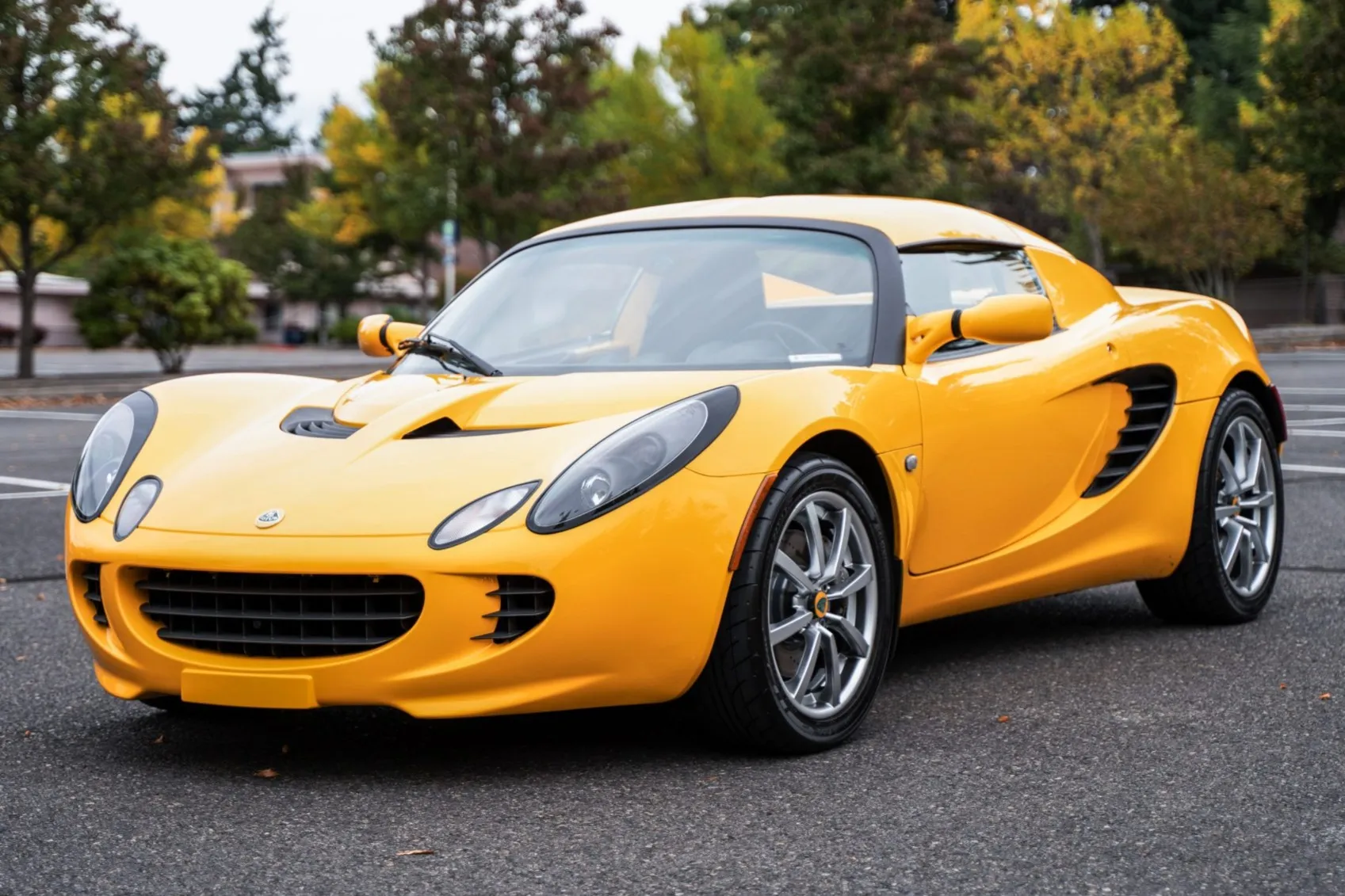
4. Lotus Elise (Series 2)
The Lotus Elise is a rare breed in modern motoring—a car that prioritizes feel and purity over comfort or convenience.
Nowhere is that philosophy more apparent than in its steering rack. The Series 2 Elise, in particular, features an unassisted, manual steering system that connects the driver directly to the front wheels with zero interference.
That means no power assist, no artificial weighting, and no filtered feedback. While this setup can feel heavy at parking speeds, it rewards the moment you begin to roll.
Elise’s steering becomes beautifully light and detailed, offering layers of feedback that even the most expensive performance cars struggle to match.
This kind of raw connection turns every drive into a sensory event. You don’t just turn the wheel—you feel what’s happening at every stage of the front tire’s contact patch. Camber changes, road imperfections, and traction variations are all delivered to the driver in real time, without digital translation.
The ratio is fast but perfectly intuitive, allowing for micro-adjustments that can be felt through the chassis instantly. The Elise doesn’t communicate in vague metaphors—it speaks to you in complete sentences.
You always know how much grip you have, how much weight is on the nose, and exactly when to feed in or take out the steering lock. It’s visceral and exhilarating in a way modern cars rarely allow.
Perhaps most remarkably, Elise’s steering never feels punishing. You might expect an unassisted rack to be brutal, but because of the car’s incredibly low curb weight, it remains usable and enjoyable. It demands a bit more from the driver, but what it gives back is extraordinary.
In a world increasingly filled with artificial enhancement, the Lotus Elise reminds us of the joy that can come from simplicity and precision.
This is a steering rack designed not to cater to the masses, but to reward those who crave honesty in their driving. It’s one of the last true analog steering experiences left on the road, and it stands as a monument to the lost art of feel.
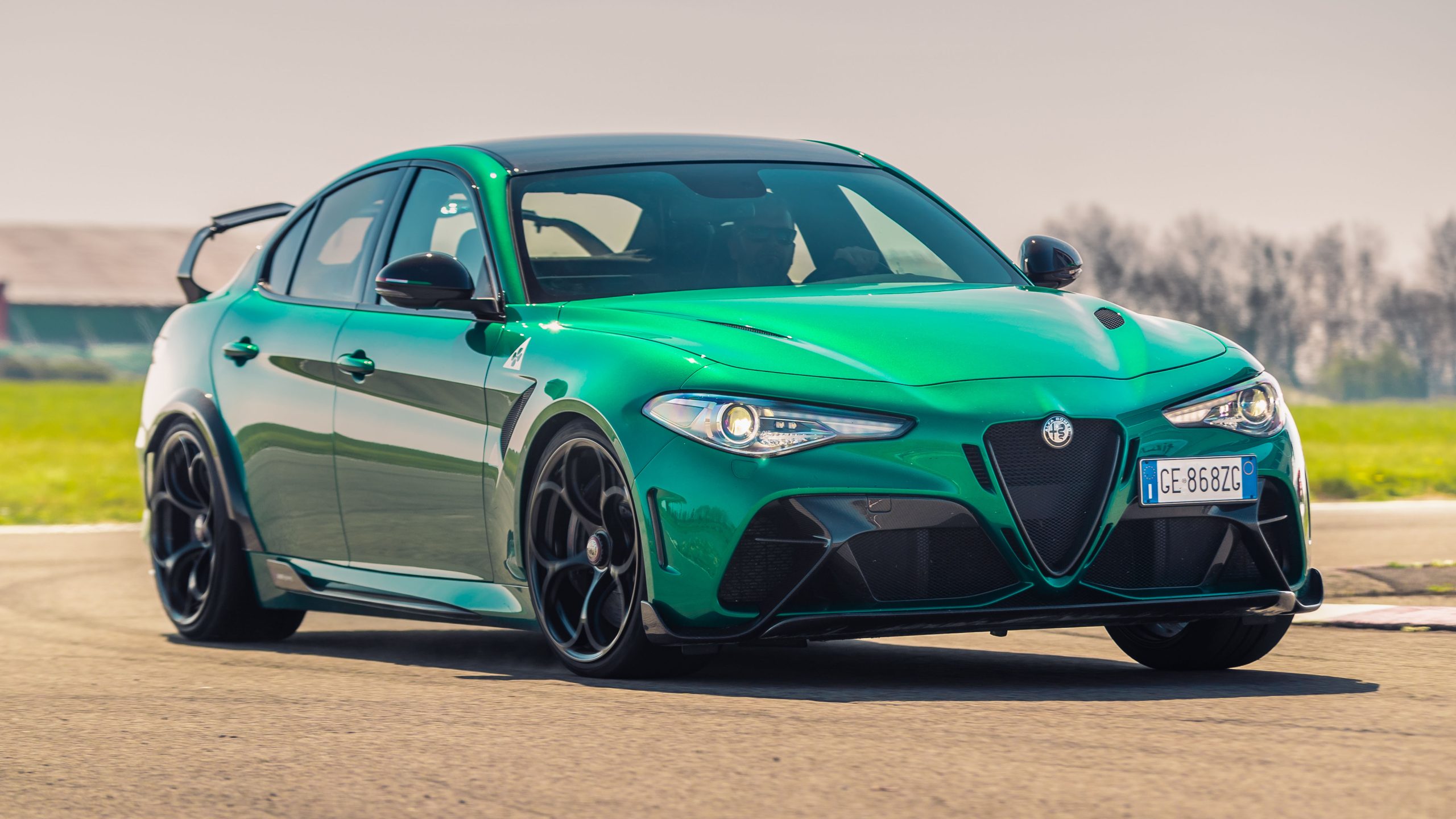
5. Alfa Romeo Giulia Quadrifoglio
The Alfa Romeo Giulia Quadrifoglio is one of the most compelling performance sedans of the past decade, and its steering feel is a major reason why it stands apart. While it uses an electric power steering system, the tuning is razor-sharp, delivering immediacy, precision, and a level of feedback that’s uncommon in this segment.
The steering ratio is quick, meaning the front end responds to the most minor of inputs, but it avoids feeling overly sensitive or darty. There’s a sense of intent baked into every movement of the wheel, and that responsiveness translates into confidence, especially at higher speeds or during aggressive cornering.
What sets the Giulia Quadrifoglio apart is how the steering works with the chassis, rather than against it.
The front suspension is designed to maximize feedback without transmitting harshness, and the rear-wheel-drive layout ensures a sense of balance and agility that rivals even some two-door sports cars.
The steering communicates grip levels cleanly, and the weighting feels authentic—never overly boosted, never lazy.
In dynamic driving situations, you can place the car exactly where you want it, adjust your line mid-corner, and feel the tires respond in kind. It’s a system that makes the driver feel empowered rather than overwhelmed.
Alfa Romeo has a long heritage of performance engineering, and the Giulia Quadrifoglio feels like a modern expression of that legacy.
It’s not just a fast four-door—it’s an emotional experience, and the steering is central to that narrative. Even during daily commutes or in traffic, the car feels alive and ready, its rack quick to react but never skittish.
It’s proof that electric steering, when done properly, can still offer the kind of engagement enthusiasts crave. In a market flooded with numb, uninspired setups, the Giulia Quadrifoglio’s steering is a standout, reminding us that even in the age of computers and comfort-first priorities, performance feel still matters.
Steering Racks With Dead Zones

6. Toyota Camry (2012–2017)
The Toyota Camry, especially the 2012–2017 generation, represents the automotive industry’s commitment to broad consumer appeal over driver engagement, and its steering system is perhaps the clearest embodiment of this philosophy.
This generation moved to electric power steering, aiming to improve fuel economy and reduce engine load, but in the process, Toyota delivered a steering rack that feels numb, overly light, and sluggish.
The dead zone around the center is particularly pronounced, requiring substantial wheel movement before the front wheels respond with any conviction.
This creates a sensation of detachment that’s especially noticeable at highway speeds, where the driver may find themselves making constant micro-corrections just to keep the car centered. It’s the kind of imprecision that doesn’t cause accidents, but subtly erodes driver confidence.
This steering numbness is most apparent when transitioning between lanes or navigating curving on-ramps, where a sense of direction and timing is critical.
In the Camry, inputs often feel delayed, like you’re operating the front wheels through a layer of elastic. The steering wheel may turn, but the reaction from the chassis lags, almost as if the car is asking, “Are you sure?” before it agrees to follow your command.
This sluggishness compounds the sense that the Camry is not interested in being driven—it simply wants to move from point A to point B with as little drama or engagement as possible. While that may suit commuters or those indifferent to driving dynamics, it offers little satisfaction to anyone seeking even a modest level of road feel.
What makes this so disappointing is that the Camry is otherwise a very competent car—reliable, comfortable, and even brisk when fitted with the V6 engine.
The chassis is stable and well-sorted, but the steering undermines the entire experience by creating a fundamental disconnect between driver input and vehicle response.
In an era where even some crossovers have begun to offer tighter, more responsive steering, the Camry’s vague rack feels dated and uninspired. It’s a reminder that in the pursuit of mass-market acceptance, manufacturers can sometimes tune the soul right out of a car.

7. Jeep Cherokee (KL, 2014–2021)
The 2014–2021 Jeep Cherokee (KL) was an important model for Jeep, meant to bridge the gap between off-road ruggedness and suburban refinement.
However, its steering system—particularly in the standard front-wheel-drive variants—feels like an afterthought. The electric power steering rack features a wide and obvious dead zone around the center, where small adjustments yield little to no directional change.
On paper, the Cherokee’s rack seems adequate, but in real-world driving, especially at highway speeds, it feels like you’re piloting a vehicle disconnected from its front wheels. This leads to an odd feeling of instability, where lane holding becomes an exercise in minor but constant correction, which can become mentally exhausting over long drives.
One reason for this dead zone could be Jeep’s attempt to make the Cherokee more approachable for non-enthusiast drivers. The steering is tuned to be light and forgiving, but instead of feeling relaxed, it ends up feeling vague and slow.
This affects more than just highway comfort—it becomes noticeable in parking lots, sharp corners, and quick maneuvers. The initial slack in the system means the driver is always guessing how much input is required, leading to either understeering or overcorrecting.
When driving in inclement weather, such uncertainty can amplify stress, especially when feedback from the road is a critical component of vehicle control. The result is a car that, while solid mechanically, never feels fully cooperative or predictable through the wheel.
Even off-road, where steering precision is arguably less important, the dead zone works against the Cherokee’s supposed capability.
Navigating rocky terrain or narrow trails requires accurate wheel placement, but with this steering rack, there’s little sense of what the front tires are doing.
The vague feel makes it difficult to thread the Cherokee between obstacles without relying entirely on visuals or guesswork. It’s a shame, because the platform is competent and the available all-wheel-drive systems are robust.
But that potential is undercut by a rack that fails to communicate, reducing a supposedly adventurous vehicle to something that feels indifferent and unengaged behind the wheel.
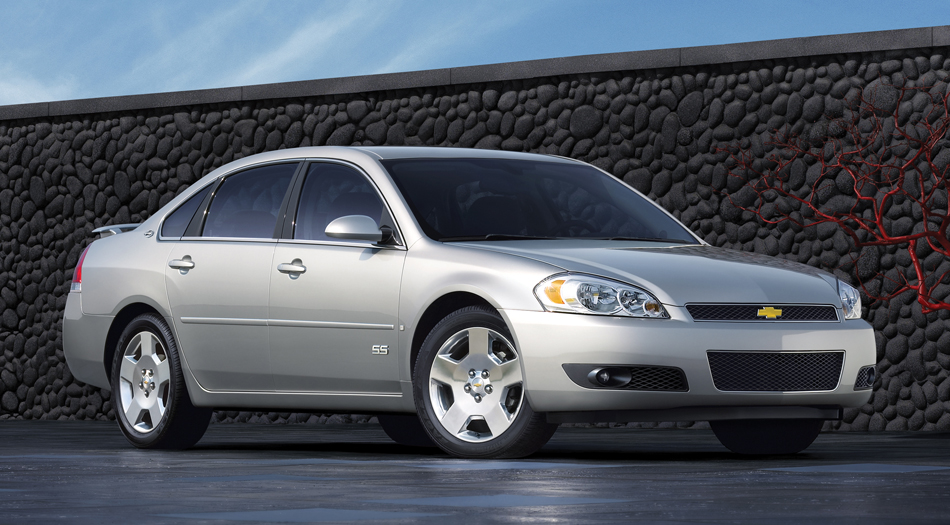
8. Chevrolet Impala (2014–2020)
The Chevrolet Impala of the 2014–2020 generation was a return to form in many respects—big, comfortable, stylish—but the steering system was a notable regression.
This full-size sedan, aimed at buyers seeking premium comfort at a reasonable price, was equipped with an electric power steering rack that leaned heavily into isolation and softness.
Unfortunately, in its effort to keep the ride serene, Chevrolet created a steering experience so devoid of feedback and immediacy that the car often feels unmoored from the road beneath it.
The dead zone is not subtle; there’s a noticeable delay between the moment the steering wheel begins to turn and when the front tires respond. On a car of this size and weight, that lag amplifies the sensation of floating or wallowing through curves.
The ratio itself is relatively slow, but that wouldn’t be an issue if the rack delivered consistent feedback. Instead, it offers minimal resistance and virtually no road feel. This makes the Impala feel larger and more cumbersome than it really is—odd, considering its platform is capable and relatively stiff.
On surface streets, the result is a steering system that never feels alert, even when executing basic tasks like merging or making quick turns.
At highway speeds, the lack of on-center precision means the car can drift or wander slightly, requiring constant attention and small corrections from the driver. The experience is not dangerous, but it is mentally draining over time and contributes to a sense of detachment.
More than anything, the Impala’s steering rack fails to live up to the promise of its elegant design and comfortable ride.
This car could have been a compelling grand tourer for the everyday driver, offering a balance of smoothness and subtle athleticism. Instead, the numb and unresponsive steering robs it of personality.
There’s no sense of occasion, no reward for driving well, and no feedback loop between human and machine. It’s a shame, because buried under that thick layer of steering insulation is a chassis that likely has more to give. But drivers will never know, because the rack doesn’t let them feel it.
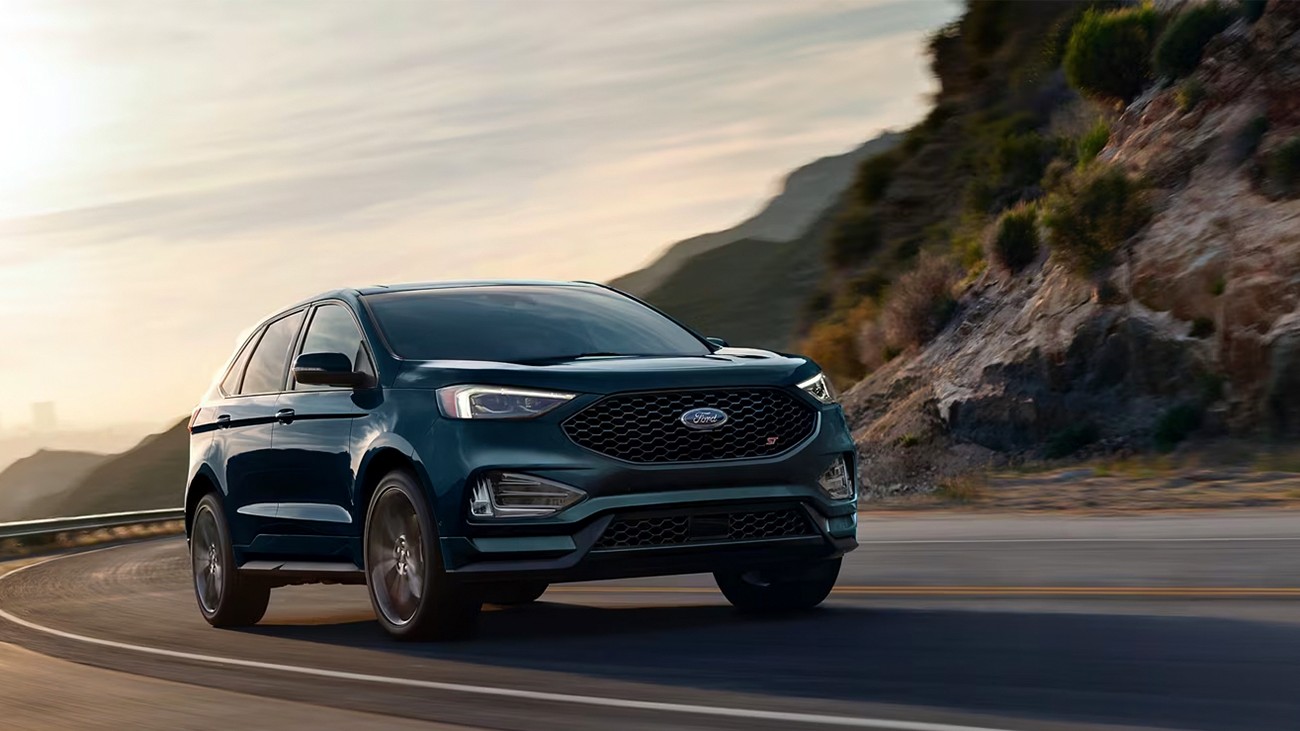
9. Ford Edge (2015–2023)
The Ford Edge was introduced as a stylish, tech-forward midsize SUV, but one of its most persistent flaws across multiple model years has been its steering system.
While the platform and suspension tuning improved incrementally, the electric power steering rack remained a weak point, characterized by excessive lightness, inconsistency, and an unmistakable dead zone around center.
This vague response isn’t just limited to the first few degrees of input; it seems to extend further than expected, requiring exaggerated movement before the wheels commit to turning. The result is a car that often feels imprecise and detached, particularly during quick transitions or in urban driving where agility is crucial.
At low speeds, the steering is overly boosted—almost to the point of feeling weightless. While this can be helpful for parking, it creates a strange, floaty sensation during city driving.
There’s no sense of effort or connection, which might seem luxurious at first, but quickly reveals itself as a flaw once you need to perform quick maneuvers or maintain tight control.
As speed builds, the rack does not gain enough resistance to inspire confidence. The steering lacks the progressive buildup of weight that makes a car feel planted and predictable. Instead, it maintains a vague, rubbery feel that leaves the driver second-guessing their inputs.
This disconnection is especially frustrating because the Edge, in its sportier ST trim, actually has a fairly competent chassis and powerful drivetrain.
With more responsive steering, it could rival some of the more dynamic crossovers on the market. Instead, the rack limits its potential, flattening the driving experience into something sterile and forgettable.
The Edge becomes a case study in mismatched components—a willing chassis paired with a steering system that fails to communicate. It’s not enough to ruin the vehicle, but it certainly diminishes what could have been a well-rounded, engaging SUV.
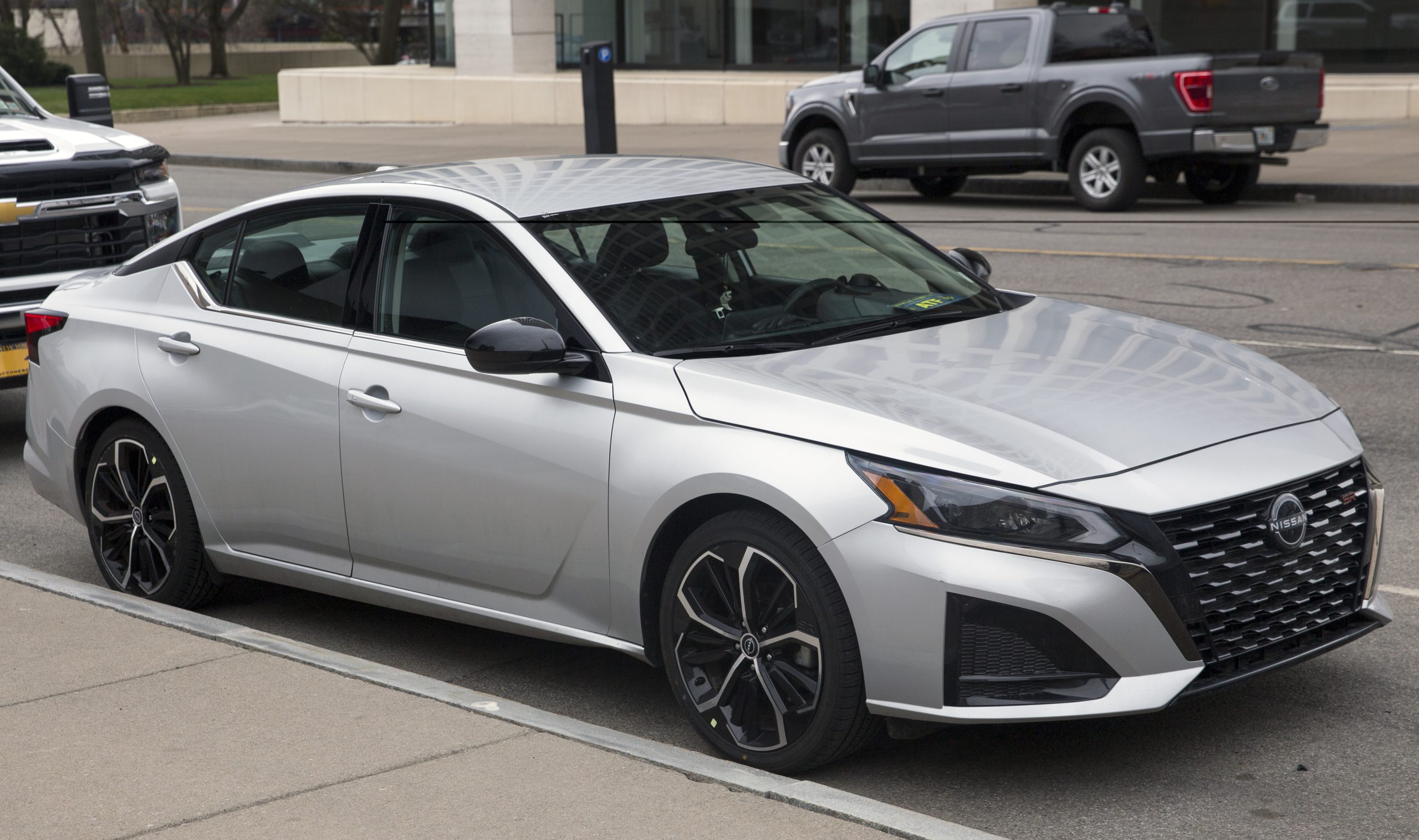
10. Nissan Altima (2013–2018)
The 2013–2018 Nissan Altima aimed to straddle the line between comfort and sportiness, but its steering system consistently failed to deliver on the latter. This generation of Altima introduced a fully electric power steering rack that was immediately criticized for its lifeless feel and conspicuous dead zone near the center.
Unlike performance-oriented systems that build tension and feedback as soon as the wheel starts to move, the Altima’s rack allows several degrees of slack before the tires respond in a meaningful way. This leads to delayed reaction times in tight turns and a general feeling of disconnect that saps driver confidence, particularly during spirited or emergency maneuvers.
Nissan appears to have prioritized low-effort maneuverability and quiet operation over feel and precision. As a result, the steering is extremely light across all speeds, which might appeal to some city drivers, but becomes a liability when more control is required.
There’s no feedback about what the front tires are doing—no subtle vibrations or resistance changes to indicate grip, camber, or traction loss. Instead, the wheel turns easily but aimlessly, offering no sense of dialogue between the driver and the road.
In evasive situations or tight curves, this vagueness means the driver often overcorrects, not out of clumsiness, but because the rack provides no guidance on how much is too much.
The real tragedy is that the Altima’s chassis isn’t bad. The suspension is reasonably well-tuned, and the car can hold its own in the midsize segment in terms of ride quality and general poise. But the steering system acts as a bottleneck, preventing the driver from exploiting any of that underlying balance.
It transforms what could have been a pleasant, even modestly engaging sedan into something that feels passive and unresponsive.
For a vehicle pitched as having “sports sedan DNA,” the Altima’s steering system is a fundamental contradiction, reminding us that a sharp-looking design and a capable chassis mean nothing if the steering doesn’t deliver on the promise.
Also Read: 10 Cars Where Rear Seatbelt Mounting Gets in the Way
Steering feel is not a spec sheet number. It’s not something you can measure with a stopwatch or quantify in pounds of torque or degrees of rotation. It’s something you feel in your hands, your shoulders, even your spine—the subtle dance between tire and tarmac that tells you whether your car is with you or working against you.
And as the automotive industry continues to chase efficiency, autonomy, and digital control, steering feel has quietly become a casualty of progress.
The transition from hydraulic to electric systems has opened the door for convenience, but in far too many cases, it has closed the window on connection.
The vehicles on our list make that truth abundantly clear. On the positive side, we find cars like the Mazda MX-5 Miata, Porsche Cayman, and Alfa Romeo Giulia Quadrifoglio—machines that defy the odds by delivering steering systems that feel genuinely alive. In these vehicles, the steering rack is more than just a functional tool—it’s a channel of communication.
These cars prove that even within the constraints of modern EPS, it’s possible to engineer feedback, response, and harmony between man and machine.
They encourage precision without punishing errors, reward smooth inputs with composure, and keep the driver informed without sensory overload. They’re engaging because they trust the driver, and in turn, the driver learns to trust them.
On the other side of the spectrum are the vehicles that failed to make the connection. The dead zones in the steering racks of cars like the Jeep Cherokee, Ford Edge, and Toyota Camry don’t just result in a less satisfying drive—they actively interfere with the relationship between driver and road.
These steering systems feel like filters that strip out the nuances of driving, delivering only the bare minimum of directional control. They turn dynamic motion into a muted experience.
Sometimes the flaw lies in an overly softened tuning; other times it’s a result of poor calibration or a misguided attempt to prioritize ease over engagement. Whatever the cause, the result is the same: a car that doesn’t feel like it’s working with you.
But this isn’t just about performance cars versus appliances. Even everyday vehicles benefit from better steering. A family sedan with good feedback can make commuting safer and more intuitive. A crossover with sharper response can feel more nimble and secure on the highway.
Steering feel affects confidence, and confidence affects everything from comfort to control. That’s why it matters—not just for enthusiasts but for anyone who values a good driving experience, whether on twisty roads or in dense traffic.
Ultimately, the best steering systems aren’t just about accuracy—they’re about emotion. They make you feel involved, capable, and in command.
And in an age where technology threatens to sterilize that connection, it’s worth celebrating the cars that still get it right—and pushing for better from the ones that don’t. Because when the steering wheel moves, it should move more than just the wheels—it should move you.
